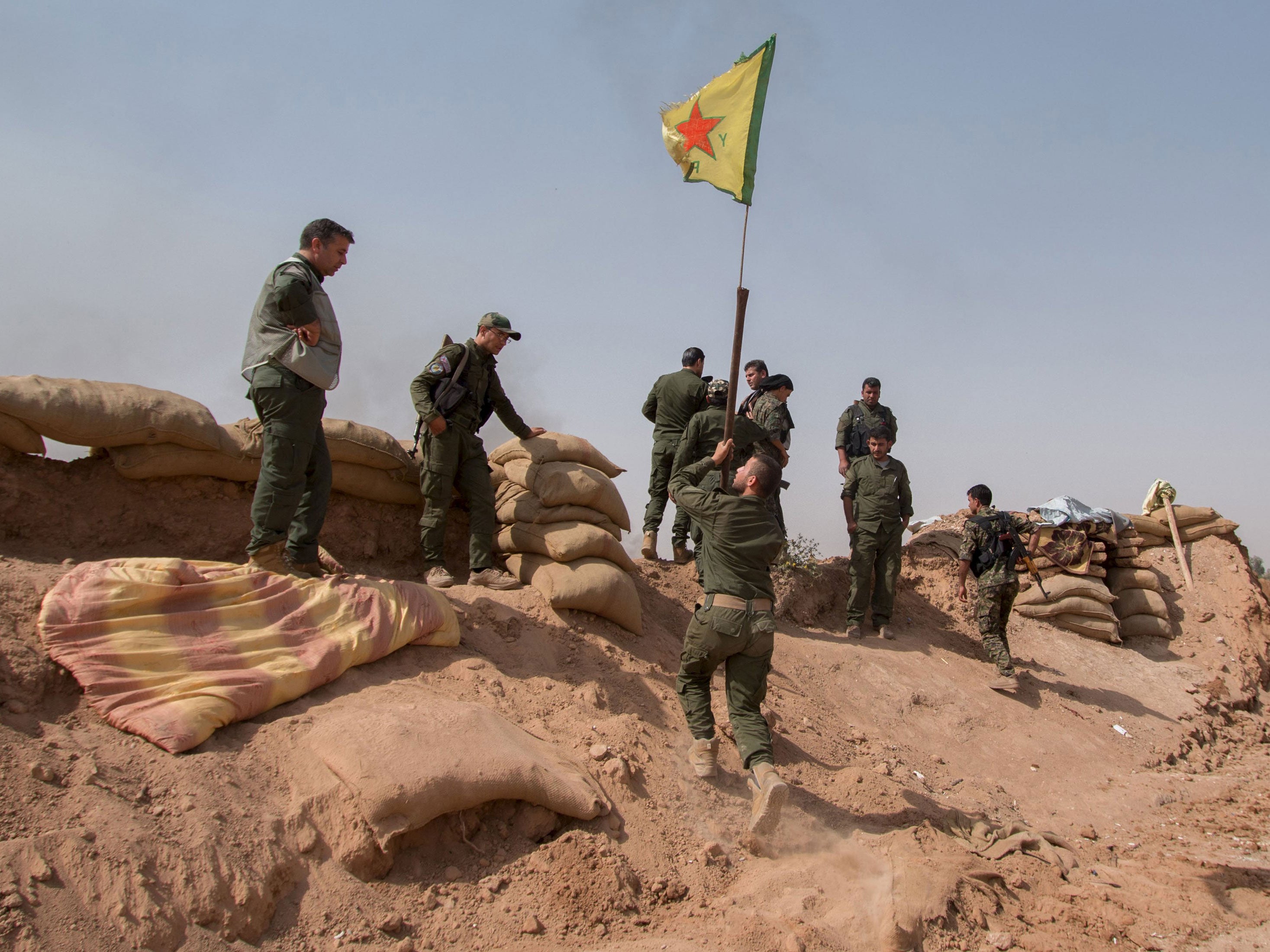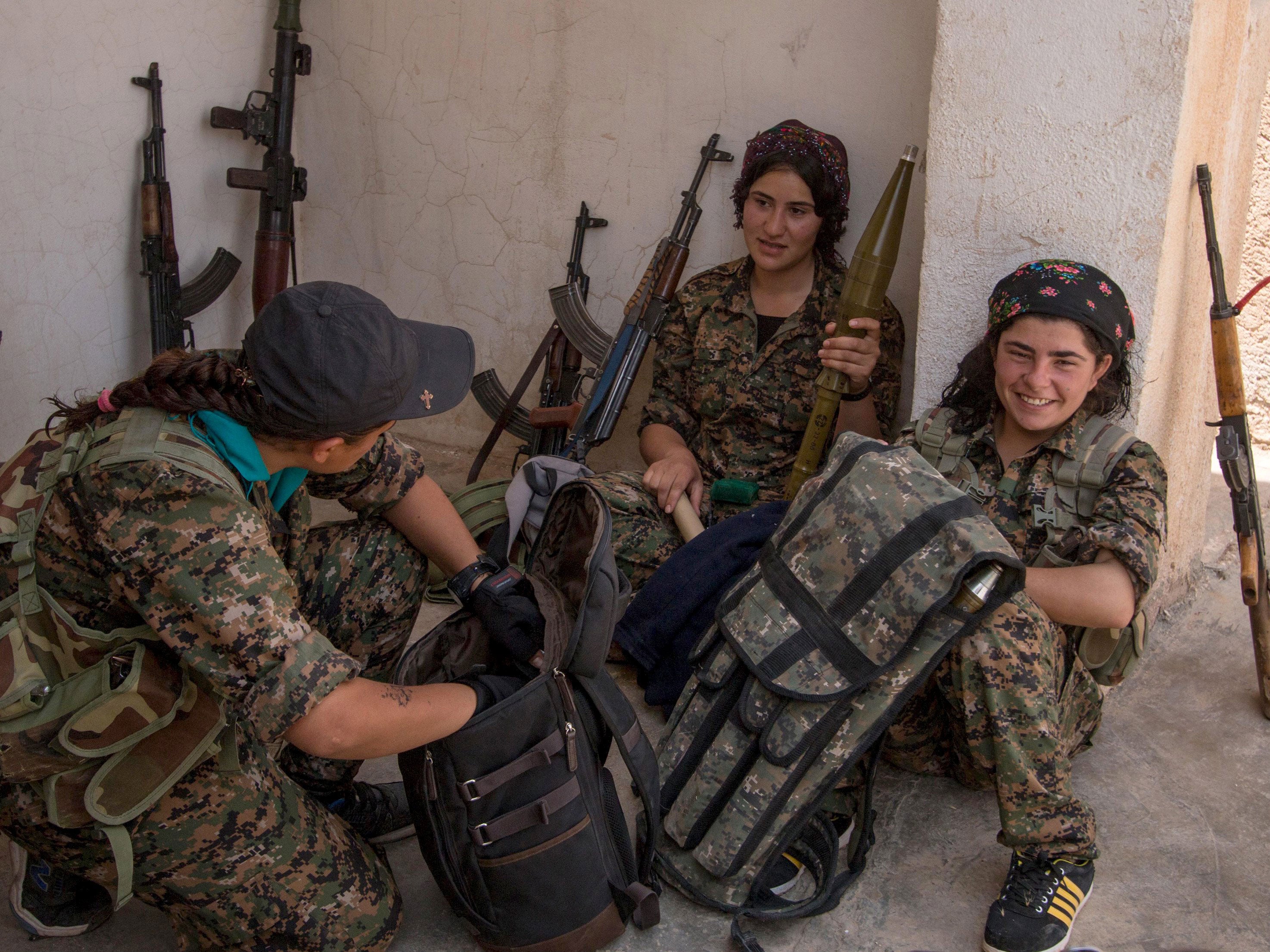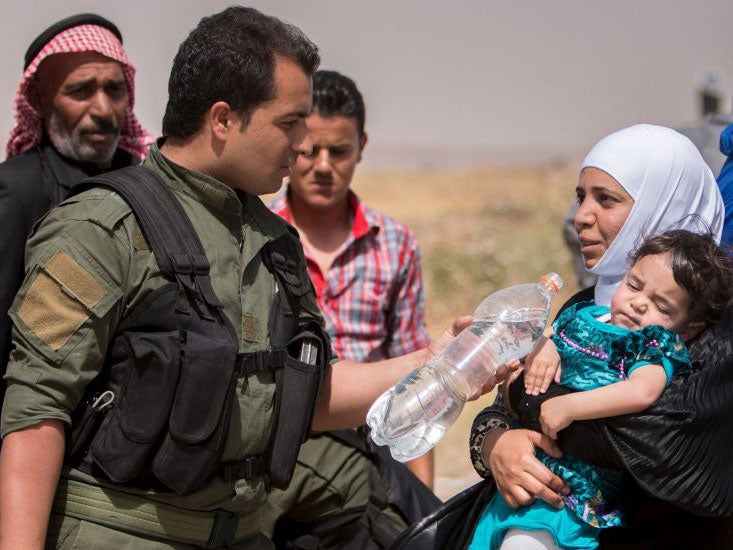War with Isis: The Kurdish forces providing a lesson in how courage, discipline and US air strikes can defeat militants in Syria
Mount Abdulaziz was the scene of a major victory over Isis this week

In a room in a house on the slopes of Mount Abdulaziz, five Isis fighters were under siege by Syrian Kurdish fighters. “They can’t get out,” says a voice cutting through the crackle on the field radio. “But one of those bastards just shot and wounded one of our men.”
This was a mopping-up operation, a day after a major battle for Mount Abdulaziz had ended with the defeat of some 1,000 Isis fighters who had been besieged. The mountain was one of the jihadists’ strongholds in this corner of north-east Syria, from which they could fire artillery into the nearby Kurdish city of al-Hasakah and menace a fertile Kurdish enclave with a population of one million.
Isis fighters did not leave much behind in their retreat. There remain a few freshly painted slogans in praise of Isis, and some burned-out hulks of cars that had been used as bombs. Crisp new cards lie discarded on the floor of one building, saying “Office of Zakat (obligatory tax for the benefit of the poor) and Insurance”, which appear to be ration cards requiring the listing of names, numbers and other details. The cards underline the extent to which Isis is well organised – and confirm that its leaders have renamed the Syrian provinces, changing al-Hasakah to Barakat.

The defeat of Isis in the battle which started on 6 May is in sharp contrast to the jihadist group’s victories over the Iraqi army at Ramadi and the Syrian army at Palmyra over the last week. An explanation for the difference in the outcome of the three battles is that the Syrian Kurdish forces are highly motivated, disciplined and come from the area in which they are fighting. The Kurdish commander General Garzan Gerer, interviewed by The Independent beside a pine forest just below the mountain, said “We fight better than the Syrian army at Palmyra because we have strong beliefs and we are defending our own land.”
There is another more material reason why the Kurds won and Isis lost. Young Kurdish fighters resting in a captured Isis command post, painted in green, cream and brown camouflage colours, are open about how much they benefit from US air strikes. Botan Damhat, a smooth-faced squad commander aged only 18, said: “Without the American planes, it would have been much harder to take the mountain. We would have won in the end, but we would have lost a lot more men.”
Kurdish commanders were unclear about casualties, saying they had buried 300 bodies of Isis fighters but many more had been carried away. They put their own fatalities at between 25 and 30, the disparity perhaps being explained by the effectiveness of American airstrikes. Asked why some Isis headquarters had not been bombed, Botan Damhat said that on the whole Isis had hidden in the pine forests on the slopes of the mountain “and the Americans knew that so they did not destroy the buildings”. In some cases, Isis set fire to its buildings before retreating.

General Gerer said the two main problems in capturing the mountain were the terrain and the fact that “many of the local villages are Arab and they often supported Daesh”, using the invariable name in Iraq and Syria for Isis. He said that there were also 25 Assyrian Christian villages where the jihadists had prevented people from leaving so they could be used as hostages in the event of a Kurdish attack. He did not think more than a few of the Arabs who had supported Isis would come back. As we left, we saw a party of Arabs with their belongings returning to their house in a village. They waved rather frantically as we drove past in a military vehicle, as if uncertain about how they would be treated by the victorious Kurds.
Who were the Isis fighters holding Mount Abdulaziz? The Kurds insisted their opponents were Muslims from all over the world, one of three of those captured turning out to be Chinese. In one building, they had found neat little notebooks with translations of different words into a variety of languages, and drawings of a desk and chair with their names in tiny handwriting.
Yalmaz Shahid, 25, another squad leader, said that Isis had fought well. “We were particularly afraid of their suicide bombers and booby traps.” Another fighter, who gave his name as Ernesto, said “they are very professional snipers”.
The victory at Mount Abdulaziz is the biggest Kurdish success since the four-and-a-half month siege of the town of Kobani on the Turkish border which ended earlier this year. In the town of Amuda, where I am staying, a few miles from the Kurdish city of al-Qamishly, there was the rattle of festive gunfire well into the night and parties of children patrolled the streets singing patriotic songs in celebration.
But not all the news this week is good for the Kurds. With the fall of Palmyra, Isis now holds half of Syria and part of the rest is held by Jabhat al-Nusra, the Syrian affiliate of al-Qaeda that has fought the Kurds in the past. Overall, Isis is much stronger than it was pre-Ramadi and Palmyra in terms of morale and prestige among the Sunni Arabs, not to mention captured equipment.
In an interview with The Independent, Amina Osse, the deputy foreign affairs manager for what Kurds call Rojava, said that she feared that Isis was now expanding fast “and may soon threaten to take all of Aleppo”, Syria’s largest city. She added that, as with the fall of Mosul last year, Isis had captured a lot of arms and ammunition. This would enable them to renew their assault on the Syrian Kurds when they want to.
She did not have much confidence in President Bashar al-Assad’s Syrian army, saying it was exhausted and suffered from the old Baath party tradition of having few links with, and thus little support from, the people of the local area. She recalled that in one battle last year, the Syrian army had abandoned 35 tanks after rejecting offers of Kurdish help against Isis.
The problem for the Syrian Kurds is that, although their discipline, backed by US air power, has been effective, they number only about 2.2 million or 10 per cent of the Syrian population. They will have difficulty holding off an Isis able to draw on resources in Syria and Iraq and having recently defeated the regular armies of both countries. The Kurdish cantons strung along the Turkish border are isolated and economically besieged from all sides.
The region is fertile with wheat fields, and the roads are full of vehicles with harvesting machinery. There are also over 1,000 “nodding donkeys”, the pumps which once produced oil but are now almost all unused and rusting. Some oil is produced locally, but it is of poor quality, causing damage to vehicle engines.
The outcome of the battle for Mount Abdulaziz shows the Syrian Kurds are militarily strong and can hold their own against Isis in a way that Syrian and Iraqi soldiers cannot. But in the long term, their de facto independent enclaves, ruling themselves for the first time in history, are very vulnerable to whoever turns out to be the winner in the Syrian civil war.
Join our commenting forum
Join thought-provoking conversations, follow other Independent readers and see their replies
Comments